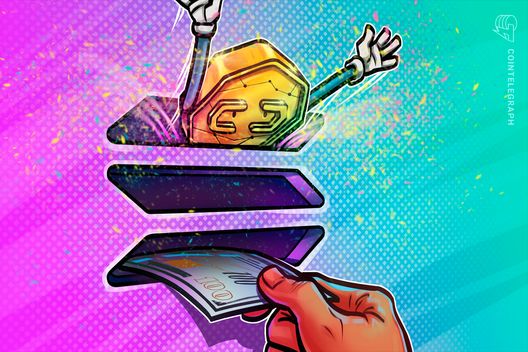In the world of cryptocurrency, 2008 marks a pivotal moment with the emergence of Bitcoin, conceptualized by the elusive figure known as Satoshi Nakamoto. The release of the Bitcoin White Paper introduced a groundbreaking peer-to-peer system, enabling value exchange without the need for intermediaries. This visionary idea laid the groundwork for what we now recognize as digital assets, eventually giving rise to countless innovative applications across various sectors.
Fast forward to today, and the landscape of digital assets has expanded significantly, encompassing permissionless, decentralized networks that support services ranging from file storage to lending. The versatility of these networks has opened up a realm of possibilities for user engagement and value creation. However, this rapid evolution has not come without challenges. The Biden-Harris Administration has faced criticism for its stringent legal actions that have stifled growth in the U.S. digital asset ecosystem, particularly due to the lack of regulatory clarity that innovators and users urgently need.
The Securities and Exchange Commission (SEC) has yet to provide definitive guidelines on how existing securities laws apply to digital transactions, contributing to the exodus of innovation to regions with well-defined regulatory frameworks.
Recognizing these challenges, Congress has embarked on a mission to modernize regulations surrounding digital assets. The 118th Congress initiated a groundbreaking joint effort between the House Committees on Financial Services and Agriculture, leading to the historic passage of bipartisan market structure legislation. This collaborative venture aims to address regulatory uncertainties while balancing the need for investor protection and fostering innovation.
As these legislative efforts unfold, key principles have emerged to guide the development of a regulatory framework that promotes responsible innovation. From ensuring clarity in asset classification to establishing robust protections for customer funds, Congress is working to create a supportive environment for digital asset transactions. Additionally, there is a strong emphasis on safeguarding decentralized projects while recognizing the unique risks and benefits they present.
As America gears up for a new chapter in digital finance, both the House and Senate remain committed to shaping legislation that could position the country as a leader in the cryptocurrency space.
With another joint hearing on the horizon this May, the path to regulatory clarity for digital assets is becoming clearer, paving the way for continued innovation and growth within this dynamic industry.

Impact of the Bitcoin Revolution and Regulatory Developments
The emergence of digital assets as a significant player in the financial ecosystem, driven by innovations since the release of the Bitcoin White paper in 2008, has profound implications for individuals and businesses alike. Below are the key points to consider:
- Introduction of Digital Assets:
- Launched by Satoshi Nakamoto, Bitcoin introduced a peer-to-peer system for value exchange without intermediaries.
- Created a foundation for various digital services and products, spurring widespread innovation.
- Decentralized Networks:
- Expansion into multiple sectors, including file storage, lending services, and connectivity solutions.
- Potential for both financial and non-financial applications, offering various services accessible by anyone.
- Regulatory Challenges:
- The Biden-Harris Administration’s efforts to regulate digital assets have faced criticism for lack of clarity.
- The SEC has yet to provide sufficient guidance on how existing laws apply to digital assets, hindering U.S. growth in this sector.
- Legislative Initiatives:
- Congress is exploring the modernization of regulations to accommodate digital assets.
- First-ever bipartisan digital asset market structure legislation has been passed, aiming for improved clarity and investor protection.
- Principles for Future Legislation:
- Promote innovation while ensuring lawful transactions.
- Provide clarity in asset classification for better user understanding.
- Establish a comprehensive framework for issuing new digital assets.
- Regulate spot market exchanges similar to traditional financial firms.
- Implement best practices for the protection of customer assets.
- Safeguard decentralized projects and the right to self-custody digital assets.
These developments indicate that as regulatory clarity improves, individuals may find new opportunities and protections within the digital asset landscape, impacting personal finance, investment opportunities, and access to innovative services.
Regulatory Evolution in the Digital Asset Space: An Opportunity or a Barrier?
The rise of digital assets, spearheaded by the introduction of Bitcoin in 2008, has revolutionized the financial landscape, presenting both incredible opportunities and notable challenges. While the ecosystem is emerging as a versatile platform for various services beyond just financial transactions, its growth has been hampered by a patchy regulatory environment. Unsurprisingly, the Biden-Harris Administration’s aggressive legal approach to curb this innovation, combined with the Securities and Exchange Commission’s (SEC) failure to clarify existing securities laws, has drawn the ire of entrepreneurs and developers alike.
On one hand, the ongoing legislative efforts within the 118th Congress are commendable, standing out as a potential turning point in the relationship between government and the digital asset ecosystem. Bills designed to promote innovation while ensuring investor protection signify a much-needed balance. This renewed focus on providing a robust framework stands as a competitive advantage for the United States, particularly against jurisdictions that offer clear regulatory guidelines, as seen in countries like Switzerland and Singapore. By taking proactive steps towards clarity, the U.S. could reclaim its position as a frontrunner in digital finance.
However, the challenge lies in the execution of these principles. Would Congress be able to strike the right balance between promoting innovation and implementing necessary precautions to protect consumers? If poorly managed, these initiatives could lead to further alienation of innovators who seek the freedom to explore unconventional ideas within their projects. This tension between regulation and innovation could inadvertently stifle creativity and push talent overseas, exacerbating the issue that initial regulatory apprehensions caused.
Startups and smaller enterprises are likely to feel the effects of these new regulations the most. For them, increased compliance requirements could lead to higher operational costs, making it harder to compete against established players that have more resources. Conversely, for larger firms already embedded in the financial system, robust regulations may provide a level playing field, potentially mitigating the risks that come from engaging in a largely unregulated marketplace.
In summary, while the regulatory clarity being sought may promote a safer environment for investors and spark greater growth for the digital asset ecosystem, it could simultaneously inhibit innovation, particularly for smaller players. Stakeholders need to proceed carefully to ensure they don’t inadvertently create barriers that counteract the very innovation they wish to foster. The path forward is undoubtedly intricate, but with the right approach, the U.S. could establish itself as the “crypto capital of the planet,” drawing in talent and capital like never before.

















